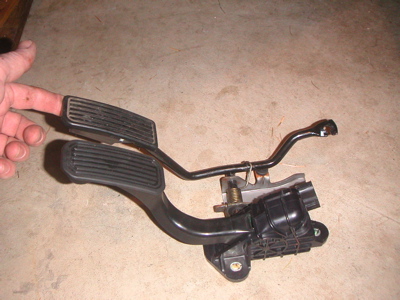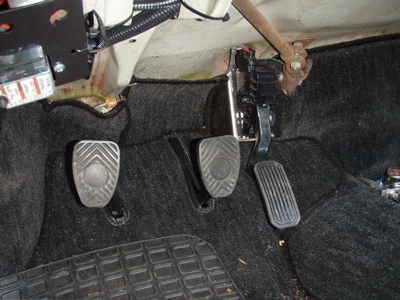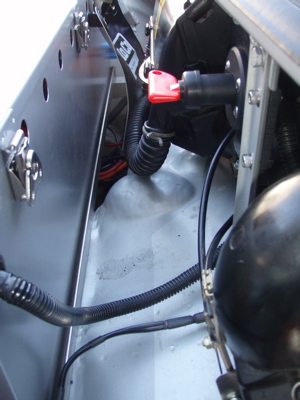Does the Hall Effect Pedal Assembly fit my car?
Q: Does the Hall Effect Pedal Assembly (HEPA) fit my car?
A: I don’t know.
The HEPA is a wonderful pedal assembly. It is rugged and smooth, but it will not fit well in all cars. You will have to examine the pictures (taken here with a 6″ caliper for reference”) to get an idea. Or you can order one to check the fit, if it does not fit well we will cheerfully take the undamaged unit back for a full refund and change your Hairball to a standard Pot input version.
Some cars have been proven for a good fit, I will list the ones I know of here. If you have pictures and a description of a car that it did, or didn’t fit well I would appreciate hearing about it so I can add them here.
The Corbin Sparrow.
Bob Schneeveis reports to me that the HEPA “looks like it was made to fit the Sparrow”. I have not seen it myself, but I believe that he made one fit with only a couple new mounting holes.
The Honda Insight.
I have put a HEPA in my Honda Insight conversion and it fit perfectly. It did require drilling two new mounting holes and putting rivet nuts in them, then one aluminum spacer later and I had a perfect fit. See the following pictures for details:

The original pedal, side by side with the HEPA.

The two golden plated parts are the mounting threads that I added. The top one required a aluminum spacer to bring it level with the mounting area. Rivet nuts, metric bolts and spacers all came from McMaster Carr online.

In place the pedal is a perfect fit for the Insight.
Porsche 914:
Richard Rau of Northwest Electric Vehicles did a wonderful job of integrating the HEPA into a 914. It was not as simple as the Honda Insight, but the results are very nice. The pedal can fit in the 914 with just a simple bracket, and I have done this before, but the resultant pedal alignment ends up being less than ideal. Richard, being determined to do the job the best way possible, made a tool for clearancing the sheet metal above the pedal assembly. This gave room for the electrical connector even when the pedal is mounted in the optimum position by his custom metal bracket. See the following pictures for details:

Here it is installed in the car, very clean!

Here is detail of where Richard made room in the sheet metal above the pedal for connector clearance.

Here is a view under the hood showing the red 12V battery cutoff switch, and below it the added hump that makes room for the pedal inside.
2007 Toyota Yaris
The Toyota Yaris is a special case. The pedal that came with the car is already a drive by wire pedal. With some research and testing we have discovered that it can be wired directly to the Hairball with a HEPI option. If you are converting a Yaris, check that the pedal part number is 78110-52020 and order the -P option Hairball. Then contact Cafe Electric support for wiring details.
If you have information on how the HEPA assembly fits in your car, please contact me so I can report it here for others to benefit.
I hope this helps,
-Otmar